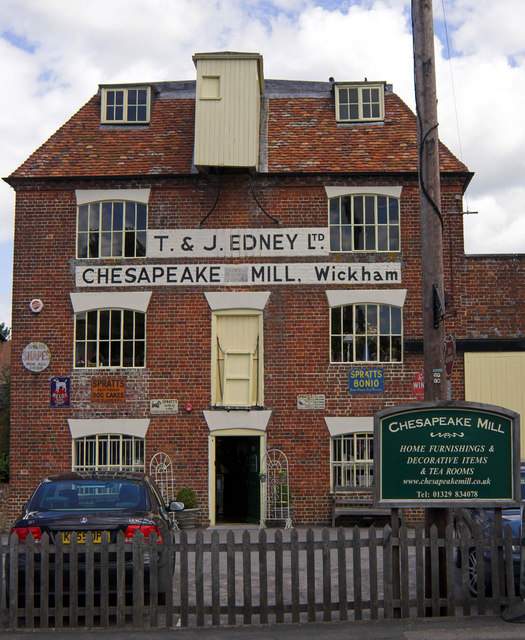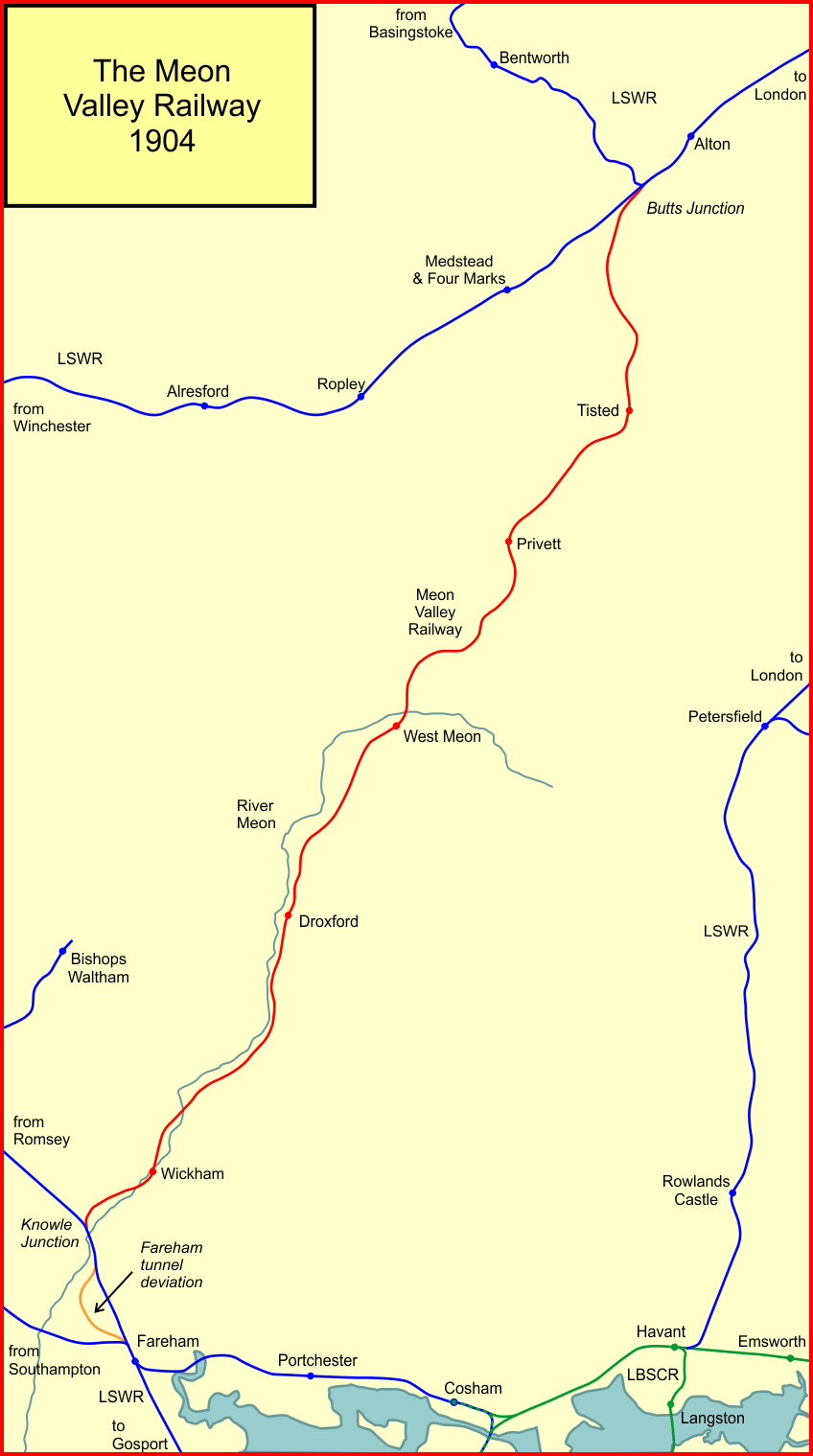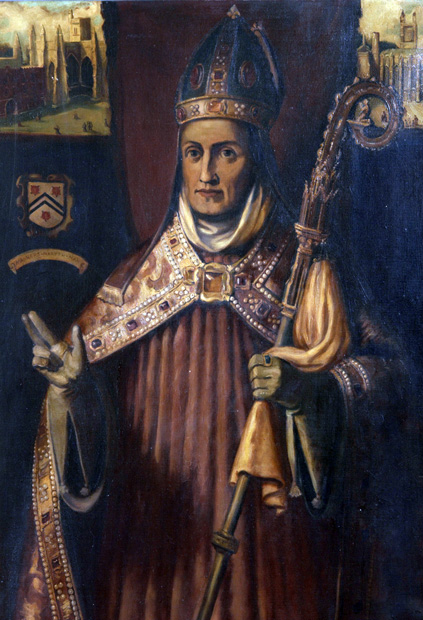|
Wickham, Hampshire
Wickham () is a village in the civil parish of Wickham, Hampshire#Wickham and Knowle civil parish, Wickham and Knowle, in the City of Winchester, Winchester district, in the county of Hampshire, England. It is about 3 miles north of Fareham. In 2021 it had a population of 2,173. At the 2001 census, it the parish a population of 4,816, falling to 4,299 at the 2011 Census. Wickham has one of the oldest continuous historic market squares lined with historic buildings and is designated a Conservation Area (United Kingdom), conservation area. Most of the square is taken by parking spaces. It was the fording place of the River Meon on the Roman road between Noviomagus Regnorum (Chichester) and Venta Belgarum (Winchester), and the inferred divergent point of the route to Clausentum (Bitterne). The Roman road from Wickham to Chichester is still followed today by local roads, passing behind Portsdown Hill to the north of Portsmouth Harbour and then onwards via Havant. In contrast, the ... [...More Info...] [...Related Items...] OR: [Wikipedia] [Google] [Baidu] |
City Of Winchester
Winchester (), or the City of Winchester, is a Non-metropolitan district, local government district with City status in the United Kingdom, city status in Hampshire, England. The district is named after its main settlement of Winchester, which is where the council is based and is also the county town of Hampshire. The city boundaries also encompass a large surrounding rural area, including the towns of New Alresford and Whiteley and numerous villages. Parts of the district lie within the South Downs National Park. The neighbouring districts are Basingstoke and Deane, East Hampshire, Borough of Havant, Havant, Portsmouth, Borough of Fareham, Fareham, Borough of Eastleigh, Eastleigh and Test Valley. History Winchester was an ancient borough, which had additionally held city status from time immemorial. The city traces its history to the Roman Britain, Roman Era, developing from the town of Venta Belgarum. It saw historic significance from its reconstruction under Alfred the Grea ... [...More Info...] [...Related Items...] OR: [Wikipedia] [Google] [Baidu] |
Botley, Hampshire
Botley is a historic village in Hampshire, England, approximately east of Southampton. It was developed as a natural crossing point for the River Hamble, and received its first market charter from Henry III in 1267. The village grew on the success of its mills, its coaching inns, and more recently strawberries, and was described as "the most delightful village in the world" by 18th century journalist and radical politician William Cobbett. History When the Romans built a road from Noviomagus Reginorum (Chichester) to Clausentum (Southampton), it crossed the River Hamble at a natural crossing point located to the south of present-day Botley. The crossing later became the site of Botley's first settlement, which existed at least as far back as the 10th century. Known in Saxon times as "Bottaleah" ("Botta" was probably a person, while "Leah" was the Saxon word for a woodland clearing). Some time prior to the Norman Conquest, a gradual rise in sea level meant that travellers fou ... [...More Info...] [...Related Items...] OR: [Wikipedia] [Google] [Baidu] |
Tanning (leather)
Tanning, or hide tanning, is the process of treating Skinning, skins and Hide (skin), hides of animals to produce leather. A tannery is the place where the skins are processed. Historically, vegetable based tanning used tannin, an acidic chemical compound derived from the bark of certain trees, in the production of leather. An alternative method, developed in the 1800s, is chrome tanning, where chromium salts are used instead of natural tannins. History Tanning hide into leather involves a process which permanently alters the protein structure of skin, making it more durable and less susceptible to decomposition and coloring. The place where hides are processed is known as a ''tannery''. The English word for tanning is from the medieval Latin verb , from the noun (oak bark). This term may be derived from a Celtic word related to the Proto-Indo-European *' meaning 'fir tree'. (The same root is the source for Old High German meaning 'fir', related to modern German ''Tannenb ... [...More Info...] [...Related Items...] OR: [Wikipedia] [Google] [Baidu] |
Isle Of Wight
The Isle of Wight (Help:IPA/English, /waɪt/ Help:Pronunciation respelling key, ''WYTE'') is an island off the south coast of England which, together with its surrounding uninhabited islets and Skerry, skerries, is also a ceremonial county. The county is bordered by Hampshire across the Solent strait to the north, and is otherwise surrounded by the English Channel. Its largest settlement is Ryde, and the administrative centre is Newport, Isle of Wight, Newport. Wight has a land area of and had a population of 140,794 in 2022, making it the List of islands of England#Largest islands, largest and List of islands of England#Most populous islands, second-most populous English island. The island is largely rural, with the largest settlements primarily on the coast. These include Ryde in the north-east, Shanklin and Sandown in the south-east, and the large villages of Totland and Freshwater, Isle of Wight, Freshwater in the west. Newport is located inland at the point at which the ... [...More Info...] [...Related Items...] OR: [Wikipedia] [Google] [Baidu] |
Meon Valley Railway
The Meon Valley Railway was a cross-country railway in Hampshire, England, that ran for 22 miles (36 km) between Alton and Fareham, closely following the course of the River Meon. At its northern (Alton) end, it joined with the Alton Line from London. It was conceived as an additional main line to the area around Gosport, and it was opened in 1903. It never fulfilled its planned potential, and remained a local line through sparsely populated agricultural areas, and it closed to passenger services in 1955; some local goods services continued until total closure in 1968. The name does not refer to an independent company; it was constructed and run by the London and South Western Railway (LSWR). History Background By the last decade of the nineteenth century, the railway map of Great Britain was already mature, and there were few gaps waiting to be filled by speculators. In 1852 the London and South Western Railway had reached Alton, from Brookwood on the London to S ... [...More Info...] [...Related Items...] OR: [Wikipedia] [Google] [Baidu] |
Wickham (Hants) Railway Station
Wickham (Hants) railway station served the village of Wickham in Hampshire, England. It was on the Meon Valley line of the London and South Western Railway. The station opened in 1903 and closed to passengers in 1955 and to goods in 1962. The main building was to a design by the architect T. P. Figgis. History Opening The station was opened by the London and South Western Railway on 1 June 1903. It was on the Meon Valley line between and ; , between Wickham and Fareham, opened in 1907. The Meon Valley line had been authorised on 3 June 1897, and opened on 1 June 1903. Closure The station closed to passengers on 7 February 1955 and to goods traffic on 30 April 1962. The prospect was raised of Wickham becoming part of a heritage railway in the 1960s after closure of the line. Indeed, the line was leased by Charles Ashby from West Meon to Droxford, through Wickham and the line used for testing of his Sadler Pacerailer The Pacerailer was a prototype railbus, a vehicle co ... [...More Info...] [...Related Items...] OR: [Wikipedia] [Google] [Baidu] |
Semaphore Line
An optical telegraph is a line of stations, typically towers, for the purpose of conveying textual information by means of visual signals (a form of optical communication). There are two main types of such systems; the semaphore telegraph which uses pivoted indicator arms and conveys information according to the direction the indicators point, and the shutter telegraph which uses panels that can be rotated to block or pass the light from the sky behind to convey information. The most widely used system was the Chappe telegraph, which was invented in France in 1792 by Claude Chappe. It was popular in the late eighteenth to early nineteenth centuries. Chappe used the term ''télégraphe'' to describe the mechanism he had invented – that is the origin of the English word "telegraph". Lines of relay towers with a semaphore rig at the top were built within line of sight of each other, at separations of . Operators at each tower would watch the neighboring tower through a telescope ... [...More Info...] [...Related Items...] OR: [Wikipedia] [Google] [Baidu] |
New College, Oxford
New College is a constituent college of the University of Oxford in the United Kingdom. Founded in 1379 by Bishop William of Wykeham in conjunction with Winchester College as New College's feeder school, New College was one of the first colleges in the university to admit and tutor undergraduate students. The college is in the centre of Oxford, between Holywell Street and New College Lane (known for Oxford's Bridge of Sighs). Its sister college is King's College, Cambridge. The choir of New College has recorded over one hundred albums, and has won two Gramophone Awards. History Despite its name, New College is one of the oldest of the Oxford colleges; it was founded in 1379 by William of Wykeham, Bishop of Winchester, as "Saint Mary College of Winchester in Oxenford", with both graduates and undergraduates. It became known as "New College" because there was already a college dedicated to St Mary in Oxford ( Oriel College). Foundation In 1379 William of Wykeh ... [...More Info...] [...Related Items...] OR: [Wikipedia] [Google] [Baidu] |
Winchester College
Winchester College is an English Public school (United Kingdom), public school (a long-established fee-charging boarding school for pupils aged 13–18) with some provision for day school, day attendees, in Winchester, Hampshire, England. It was founded by William of Wykeham in 1382 as a feeder school for New College, Oxford, and has existed in its present location ever since. It is the oldest of the nine schools considered by the Clarendon Commission. The school has begun a transition to become co-educational, and has accepted male and female day pupils from September 2022, having previously been a Single-sex education, boys' boarding school for over 600 years. The school was founded to provide an education for 70 scholars. Gradually numbers rose, a choir of 16 "quiristers" being added alongside paying pupils known as "commoners". Numbers expanded greatly in the 1860s with the addition of ten boarding houses. The scholars continue to live in the school's medieval buildings, whi ... [...More Info...] [...Related Items...] OR: [Wikipedia] [Google] [Baidu] |
William Of Wykeham
William of Wykeham (; 1320 or 1324 – 27 September 1404) was Bishop of Winchester and Chancellor of England. He founded New College, Oxford, and New College School in 1379, and founded Winchester College in 1382. He was also the clerk of works when much of Windsor Castle was built. Early life William of Wykeham (born William Longe) was the son of John Longe, a freeman from Wickham in Hampshire. He was educated at a school in Winchester, and probably enjoyed early patronage from two local men, Sir Ralph Sutton, constable of Winchester Castle, and Sir John Scures, lord of the manor of Wickham, and then from Thomas Foxley, Constable of Windsor Castle. In 1349, Wykeham was described as a chaplain when he was appointed rector of Irstead in Norfolk, a position which was in the gift of the Crown. Builder William became secretary to the constable of Winchester Castle and in that capacity learned about building. This led to architectural work for King Edward III, for who ... [...More Info...] [...Related Items...] OR: [Wikipedia] [Google] [Baidu] |
Antonine Itinerary
The Antonine Itinerary (, "Itinerary of the Emperor Antoninus") is an , a register of the stations and distances along various roads. Seemingly based on official documents, possibly in part from a survey carried out under Augustus, it describes the roads of the Roman Empire. Owing to the scarcity of other extant records of this type, it is a valuable historical record. Publication History Manuscripts Almost nothing is known of its author or the conditions of its compilation. Numerous manuscripts survive, the eight oldest dating to some point between the 7th to 10th centuries after the onset of the Carolingian Renaissance. Despite the title seeming to ascribe the work to the patronage of the 2nd-century Antoninus Pius, all surviving editions seem to trace to an original towards the end of the reign of Diocletian in the early 4th century. The most likely imperial patron—if the work had one—would have been Caracalla. Stemma There are many manuscripts preserving the ... [...More Info...] [...Related Items...] OR: [Wikipedia] [Google] [Baidu] |
Alton, Hampshire
Alton ( ) is a market town and civil parish in East Hampshire, England, near the source of the northern branch of the River Wey. It had a population of 19,425 at the 2021 census. Alton was recorded in the Domesday Survey of 1086 as ''Aoltone''. During the Saxon period Alton was known as ''Aweltun''. The Battle of Alton occurred in the town during the English Civil War. It also has connections with Sweet Fanny Adams and Jane Austen. History Early history The Alton Hoard of Iron Age coins and jewellery found in the vicinity of the town in 1996 is now in the British Museum. There is evidence of a Roman posting station at Neatham near Alton, probably called Vindomis, and a ford (crossing), ford across the River Wey on the line of a Roman road that ran from Chichester to Silchester. An Anglo-Saxon settlement was established in the area and a 7th-century cemetery was discovered during building excavations. It contained grave goods including the ''Alton Buckle'' which is on displa ... [...More Info...] [...Related Items...] OR: [Wikipedia] [Google] [Baidu] |










